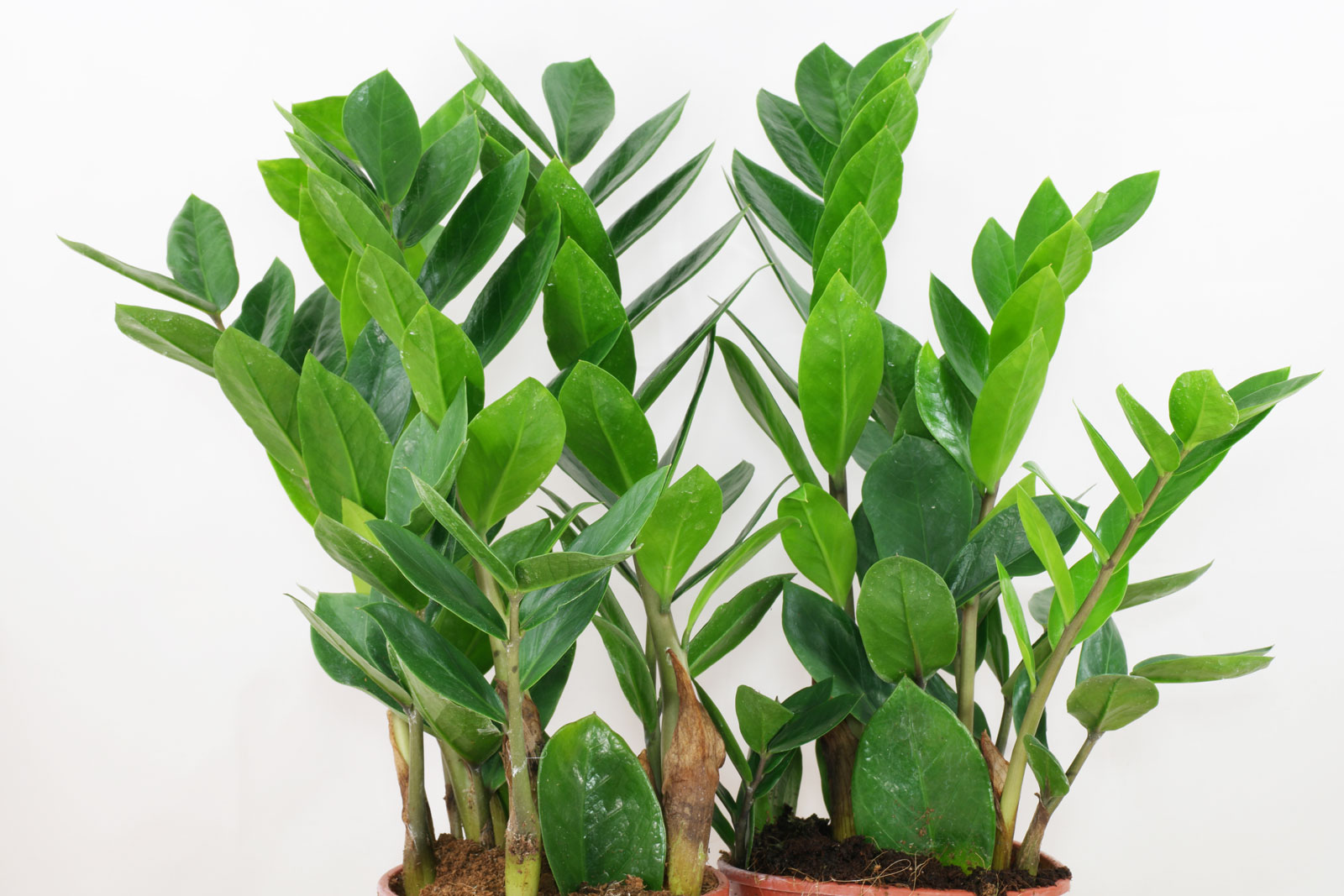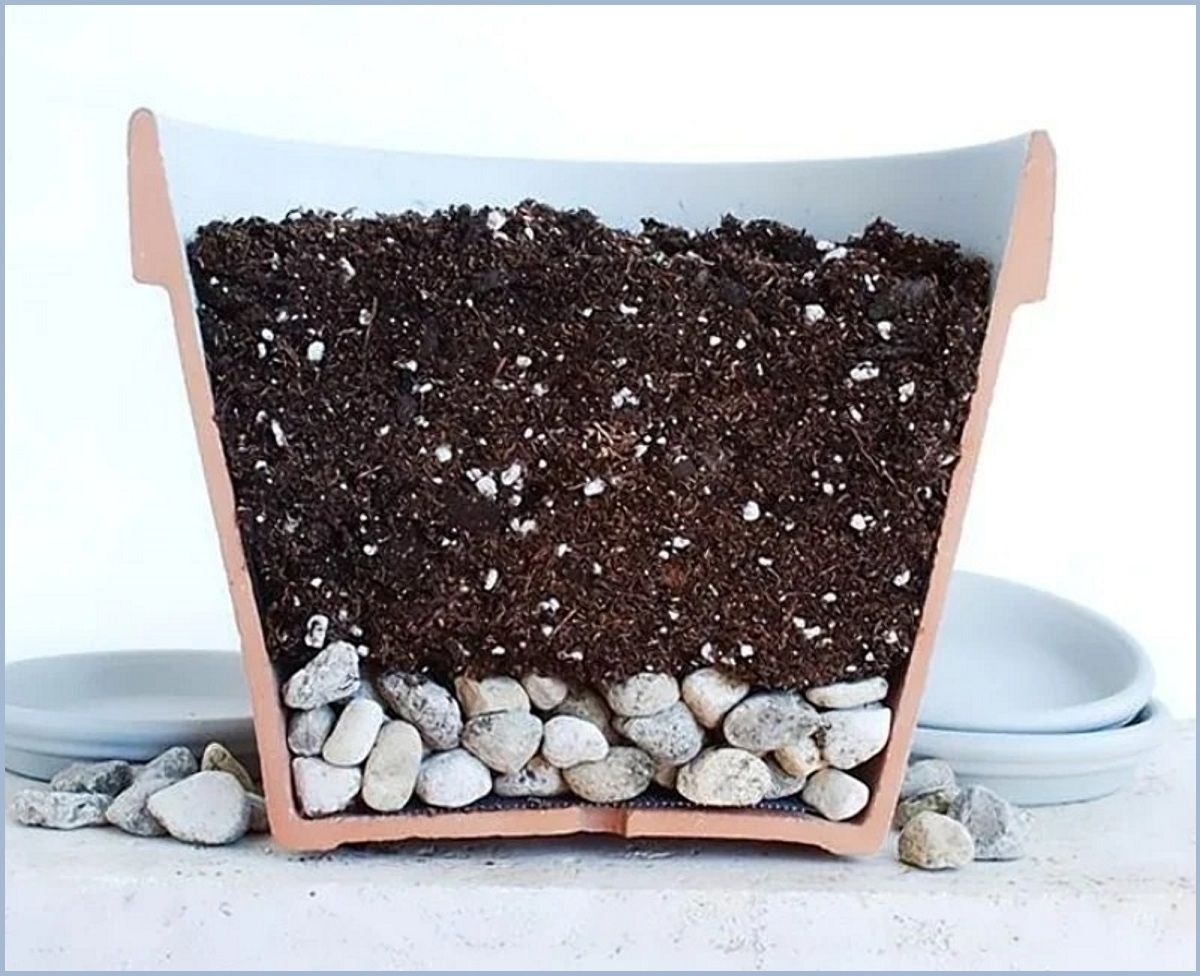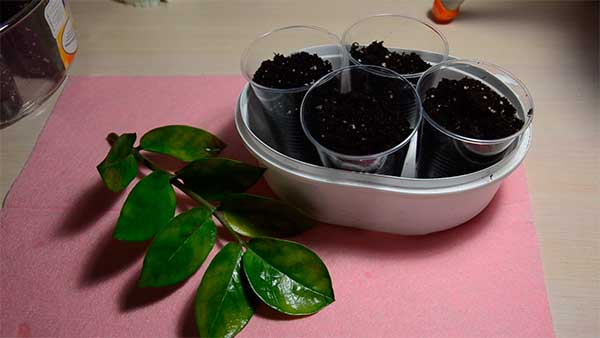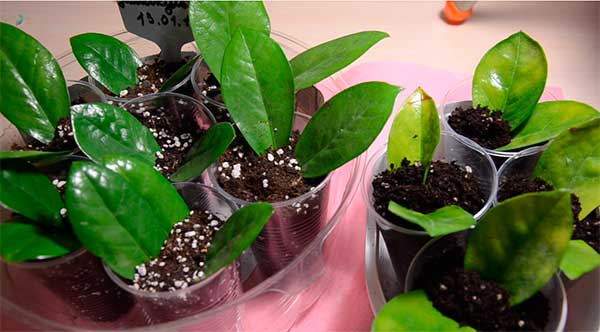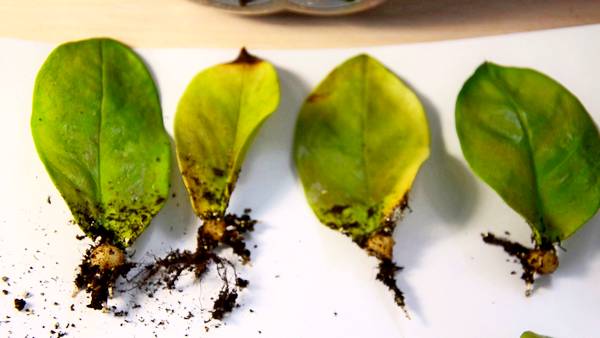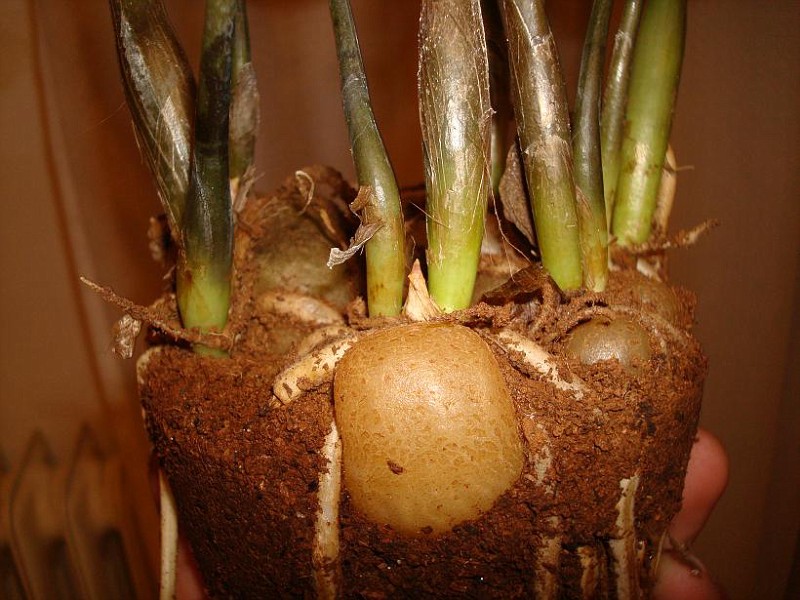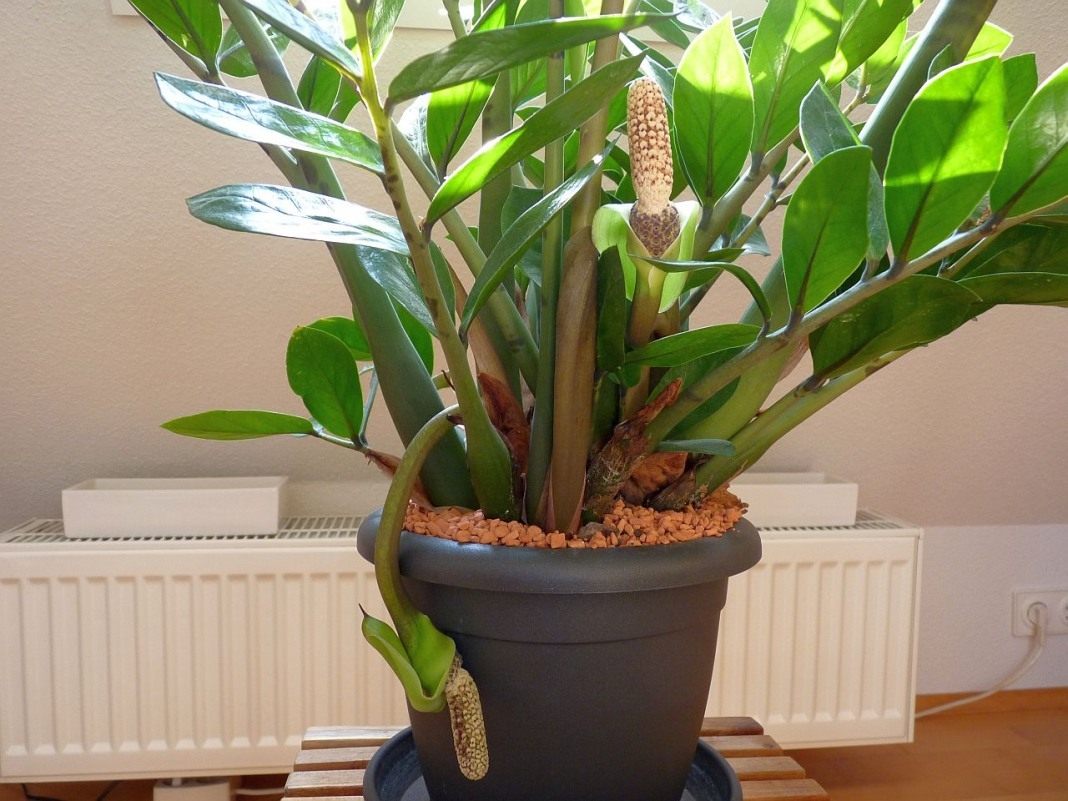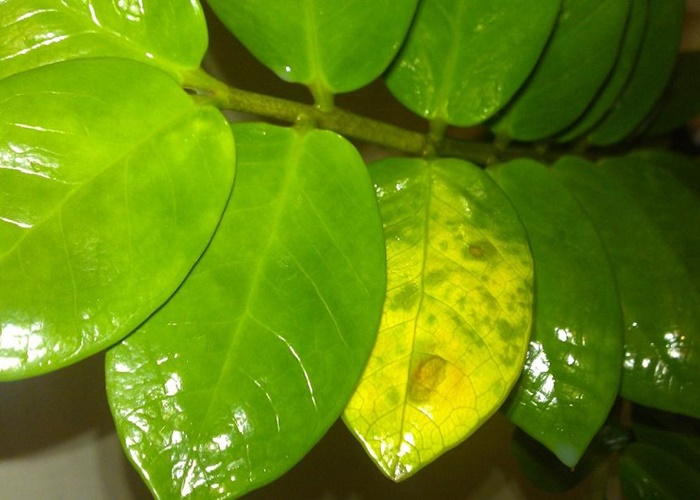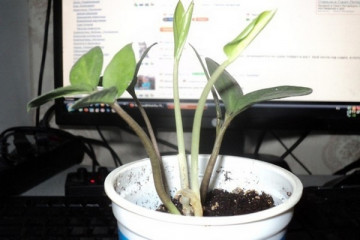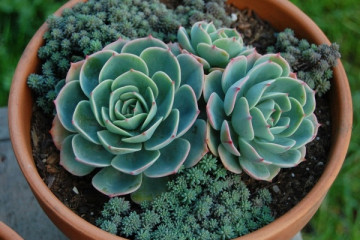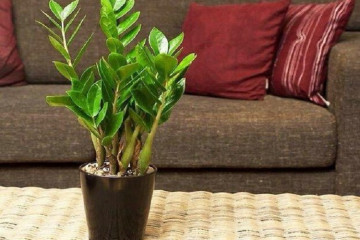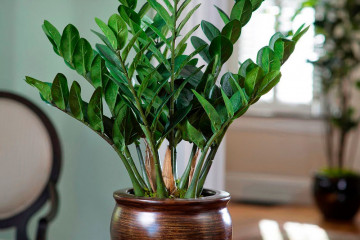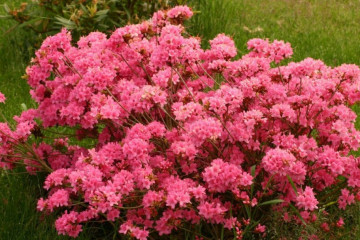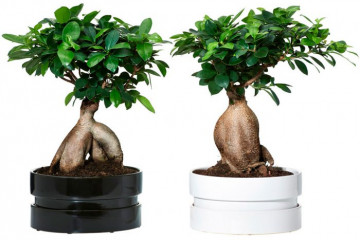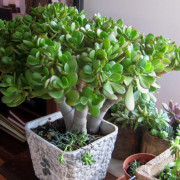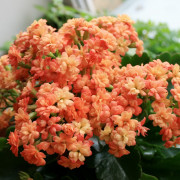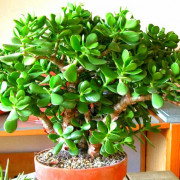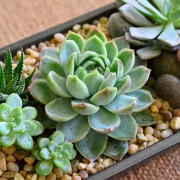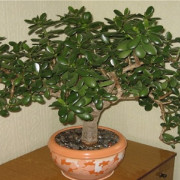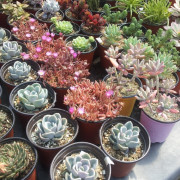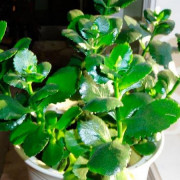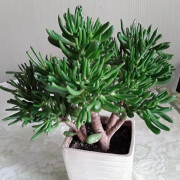Zamioculcas reproduction at home
Content:
Zamioculcas (lat.Zamioculcas) does not have so many popular names - money tree, celibacy flower, dollar tree. In reality, it is a perennial, herbaceous, evergreen plant with a thick tuberous rhizome. The succulent belongs to the Aroid family (Latin Araceae).
Reproduction of zamiokulkas at home
In the botanical classification, only one representative of the species is known - Zamioculcas Zamielistny (lat.Zamioculcas Zamiifolia). On sale you can find its various varieties and hybrids, but they all reproduce in the same way.
What time of the year is considered optimal
The best time to carry out work on the reproduction of zamiokulkas is early spring.
There are several reasons for this:
- the duration of daylight hours increases;
- easier to maintain an even temperature and humidity;
- the plant tolerates injury less painfully.
Dollar tree propagation rules
The main part of the plant is not the outer stems with leaves, but the underground tubers. In order for the plant to grow well in a new pot, its volume should be only slightly more than the size of the tuber itself, but a thick layer of drainage is required at the bottom.
The optimum air humidity is in the range of 30-60%, so the atmosphere of the heated rooms suits the succulent well.
Selection of suitable soil and arrangement of drainage
The soil mixture for planting can be prepared independently by mixing turf soil with peat and sand in equal proportions. Ready-made soil is suitable for cacti and succulents. A high-quality substrate is loose, breathable, has a pH of 5.5-6.5.
It is advisable to take a ceramic pot, since the overgrowing leaves can overturn too light plastic. At the bottom, holes are required for the drainage of water, which is drained from the sump every time after watering. Drainage from small expanded clay, broken brick or small pebbles is poured about 1/4 of the height of the pot.
Providing warmth and bright ambient lighting
The air temperature all year round should be flat within +18 .. + 26 ° С. Equally critical for this succulent: hypothermia below +15 ° С and overheating above +38 ° С.
The African plant is very fond of bright light, but continues to grow in partial shade. For the pot, sills on the south and southeast windows are ideal.
The more light the leaves receive, the larger and brighter they will grow. In the hottest summer months, the leaves on the south window can get burned, so they are slightly shaded with tulle or blinds.
Zamioculcas - reproduction at home, methods
It is difficult for beginners to believe how slowly this succulent reproduces.An excellent result can only be achieved by knowing exactly how to propagate zamioculcas at home. The most effective is considered to be the division of the bush into several independent tubers, but other methods are also used.
Dollar tree - how to propagate vegetatively
One or more branches (shoots) thickened at the base, covered with opposite fleshy leaves, grow from adult tubers of zamiokulkas. Each of these parts of the plant is suitable planting material for propagation.
How Zamiokulkas reproduces by a branch
For reproduction, the twigs are cut at the base and rooted in soil or water. Both methods can work well, but it is usually easier to root a branch in the substrate.
The step-by-step procedure is as follows:
- The lower end of a branch cut with a sharp knife is dipped in Kornevin or Zircon to stimulate root growth.
- Leave to dry for a couple of hours.
- Placed in a glass of water or in a pot with a substrate.
The first time you can water the pot with a branch only after 2-3 days. The rate of root formation is 2-3 months, after which a tuber should form at the end of the branch. The appearance of a new vegetative bud should be expected no earlier than in 5-6 months. To speed up the process a little, you can use a greenhouse - cover everything on top with a transparent bag.
Propagation by cuttings
An adult branch can be divided into segments - cuttings. A shoot suitable for reproduction has a couple of leaves (crown - 3 leaves). Each of them can be rooted in the same way as a whole branch. Cutting is beneficial in that the result of the work will be not one young plant, but several at once.
Zamioculcas - leaf propagation
If it is not possible to cut off a whole branch (for example, it is the only one in the available specimen of zamiokulkas), you should think about how to grow zamiokulkas from a leaf. The leaf can be carefully cut off at the bottom of the shoot without thereby spoiling its appearance.
The correct sheet should be free of stains, traces of disease and damage. With its help, you can successfully dilute succulent in the right amount using rooting in water or in a substrate. Nodules at the lower end of the leaf can form in a month, and then thin white roots will appear. If rooting took place in water, then it is necessary to make a careful planting in the soil.
How to plant zamioculcas at home with tubers
Adult tubers form daughter tubers with age. These "babies" are excellent planting material. It is very simple to propagate zamioculcas with their help, misfires usually do not happen if you follow the necessary rules for caring for the plant.
To get the tubers, you will have to remove the entire bush from the pot (sometimes you have to break or cut it for this). Further, all the tubers must be divided, each must have its own bunch of thick roots and a stem (or bud). Large tubers with multiple stems can be cut into pieces by crushed coal. After that, it remains only to plant the tubers in pots with soil, trying to select each their own container in size.
Generative breeding method
For those who are seriously engaged in breeding zamiokulkas, you can try the seed method of its reproduction. This plant rarely blooms, it is almost impossible to find its seeds on free sale.You just have to wait for them to appear on your own copy.
The inflorescence is an ear with male and female flowers (like most aroids). With pollination, which in the natural environment occurs with the help of wind and insects, and at home - artificially, ovaries with seeds are formed. They should be planted immediately after ripening, since germination is lost after a year.
Sowing is carried out into the substrate, deepening each seed by 1.5-2 cm. Cover with a film on top and leave in a warm place. The emergence of a sprout will have to wait 2-3 months. First, an underground nodule will form, and only then a sprout will appear from it. You can plant it only after the appearance of several leaves.
Care of young plants
In general, care for cuttings and detached nodules is exactly the same as for an adult specimen. Succulent doesn't like:
- frequent transplants;
- excessive watering;
- drafts;
- hypothermia.
Watering is carried out only when the soil in the pot dries out more than half. Prolonged drought practically does not harm the plant, in winter it is watered no more than 1 time per month. Due to the bay, the tubers rot, and the plant is likely to die.
In hot months, it is useful to spray the aerial part with clean warm water from a spray bottle once a day (early in the morning or late in the evening). In addition, throughout the year, the leaves must be regularly wiped with a damp cloth from dust.
Fertilizer is applied twice a month, only in the summer months. Suitable preparations for cacti and succulents. They are usually sold in liquid form and diluted in pure water at the dosage indicated by the manufacturer.
Possible problems and solutions
Florists have noticed several common problems when breeding zamiokulkas and ways to solve them:
- Leaves fall - drying has occurred. Usually, you can restore life to the plant if you resume regular watering.
- Wet and darkening parts of the leaves indicate rotting processes in the tubers. It is necessary to remove the plant from the pot, separate all rotten parts, treat the remainder with crushed coal and fungicide, and plant it again in a clean pot with a new substrate. In the future, reduce watering.
Very rarely, succulents are affected by pests:
- Spider mite. Its appearance is signaled by a whitish bloom on the inside of the leaves. You shouldn't run this problem. The thing is that zamioculcas is not capable of regeneration. Spots and damage on its shoots will remain until the end of its life. Pests should be dealt with as soon as they are found. For ticks, specialized acaricides are used, for example, "Actellik".
- Shield. Its appearance is easy to overlook, so small are young pests. Adults hide in the plant itself, closing on top with their "shields", which do not differ in color from the leaves. Treatment with "Aktara" helps from this pest.
- Aphid. There are quite a few pests of this group, they differ from each other in size and color. They should be dealt with in the same way - wash the leaves with soapy water, and then with clean water. To consolidate the result, it is necessary to spray the shoots with an insecticide, for example, "Fitoverm".
Breeding zamioculcas is very interesting, because the features of the life cycle of this plant are unique. Sometimes there is a feeling that the succulent just froze forever, but some time passes and it literally "shoots out" new shoots. This event is definitely worth the wait.
